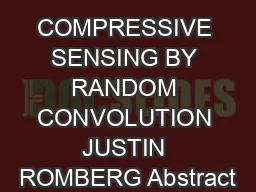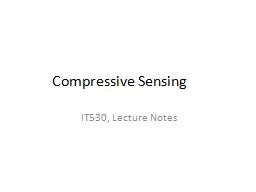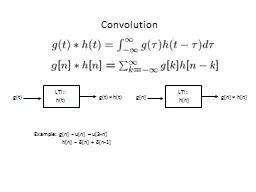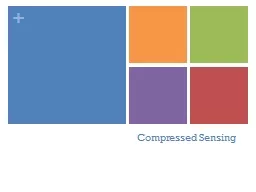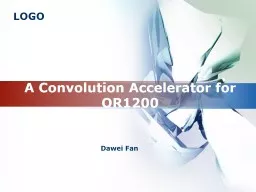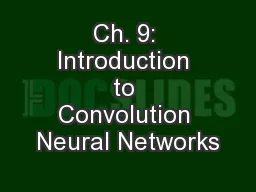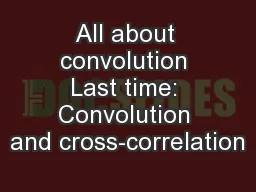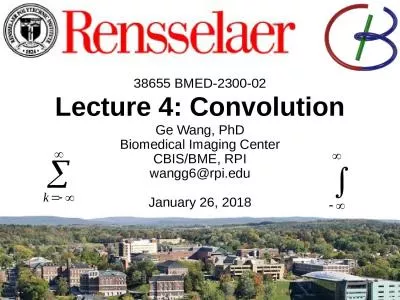PDF-COMPRESSIVE SENSING BY RANDOM CONVOLUTION JUSTIN ROMBERG Abstract
Author : mitsue-stanley | Published Date : 2014-12-26
This paper outlines a new framework for compressive sensing convolution with a random waveform followed by random time domain subsampling We show that sensing by
Presentation Embed Code
Download Presentation
Download Presentation The PPT/PDF document "COMPRESSIVE SENSING BY RANDOM CONVOLUTIO..." is the property of its rightful owner. Permission is granted to download and print the materials on this website for personal, non-commercial use only, and to display it on your personal computer provided you do not modify the materials and that you retain all copyright notices contained in the materials. By downloading content from our website, you accept the terms of this agreement.
COMPRESSIVE SENSING BY RANDOM CONVOLUTION JUSTIN ROMBERG Abstract: Transcript
Download Rules Of Document
"COMPRESSIVE SENSING BY RANDOM CONVOLUTION JUSTIN ROMBERG Abstract"The content belongs to its owner. You may download and print it for personal use, without modification, and keep all copyright notices. By downloading, you agree to these terms.
Related Documents

